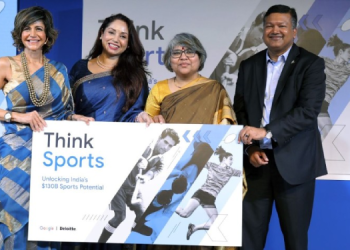Mumbai: While influencer marketing is recognised as a highly impactful form of contemporary marketing, similar to other marketing approaches, success is not guaranteed. It’s fundamental to monitor the campaign’s progress in alignment with the predefined goals to ensure maximum effectiveness. Below are three significant KPIs:
Campaign Reach – Measure the post’s reach and Impression. It will give brands an idea about the influencer’s impact in creating brand awareness.
Social Engagement – Measure engagement parameters such as the number of likes, comments, shares, brand mentions, and use of campaign hashtags. Higher engagement means brand message has been well received by the audiences and the brand is likely to acquire more potential customers.
Conversions – It’s an important parameter to measure and its meaning would depend on the goal of the campaign. Higher conversions could lead to subscriptions, downloads, direct sales etc.
Comscore has done an analysis ‘Influencer Marketing: Rising Tide of Social Media Influencers in India.’ In a nutshell, influencer marketing has become a significant factor in India’s digital environment, providing marketers with a dynamic and efficient method to engage with consumers authentically. Through strategic collaborations with influencers, brands are enhancing their marketing initiatives, cultivating brand loyalty, and ultimately, attaining measurable business outcomes in the continuously evolving realm of digital marketing.
Comscore added that thanks to Comscore Social’s Partnership Explorer tool, Influencer Campaigns can be tracked. Cricketer Virat Kohli posted a total of 159 pieces of sponsored content during 2023 from which the influencer received more than 148 million actions—followed by Rohit Sharma and Anushka Sharma who received around 10 and 7 million actions, respectively.
In recent years, Influencer Marketing has emerged as a powerful and widely adopted strategy in the digital advertising landscape. In 2024, we are seeing a global tech giant like Google India partnering with social media influencers, such as Shraddha or Abhinav Yadav from Create Your Taste among others, to convey their advertising message.
This analysis leads one to question why there is such enthusiasm among marketers for influencer marketing. What factors have led to this shift?
Consumer habits are changing in India: The proliferation of affordable smartphones and data plans in India has led to a continuous increase in the population of internet users each year. According to the Comscore report, India’s digital population stands at 524 million1, with 93%2 of internet users actively engaging on at least one social media platform – the time Indians spend on social media has increased compared to four years ago, now averaging around 10,000 million hours per month in the first two months of 2024.
With changing consumer habits, brands have learned to tweak their marketing strategy. Traditional advertising mediums like print, radio and television use interruptive marketing strategies and consumer’s minds, in some cases, ignore them. Influencer marketing is very similar to word-of-mouth marketing. It is a seamless form of marketing that is non-intrusive and based on the trust consumers have in the influencer.
Who is considered a Social Media Influencer?: Social Media Influencers could be big celebrities, actors or actresses, athletes, singers, or anyone with a good number of followers on social media platforms who holds the ability to influence their followers with their content.
Influencers are classified by the type of content they produce and the total number of their followers on social media. Anyone with more than 1 million followers is called Mega Influencer, anyone with 100,000 to 1 million followers is called Macro Influencer and anyone with less than 100,000 followers is called Micro Influencer.
In the following table, we show the top 10 Indian influencers by their level of engagement on social media throughout 2023.

How to select the right Influencer for your Brand?: The initial consideration should be brand alignment. It’s essential that the influencer’s image and content resonate with the personality of the brand. Following this, assessing reach and engagement is crucial. A common mistake made by many brands is solely relying on the influencer’s total number of followers while overlooking their engagement rate. Higher engagement signifies a stronger trust factor among the influencer’s followers. For instance, in the table below, Kritika Khurana demonstrates higher engagement compared to Kusha Kapila during February 2024, indicating that her audience is more inclined to react to her content and the brands she endorses.
Comscore added that thanks to Comscore Social’s Affinity tool agencies and brands can analyse the audience’s behavior across platforms to identify sponsorship partners based on the true preferences of the brand’s followers. The example below shows that Rishabh Pant’s and Mohammed Shami’s followers are more likely to engage with the Adidas (India) brand on social media compared to general social media users – making these influencers a better choice to promote the sportswear brand compared to others.

















